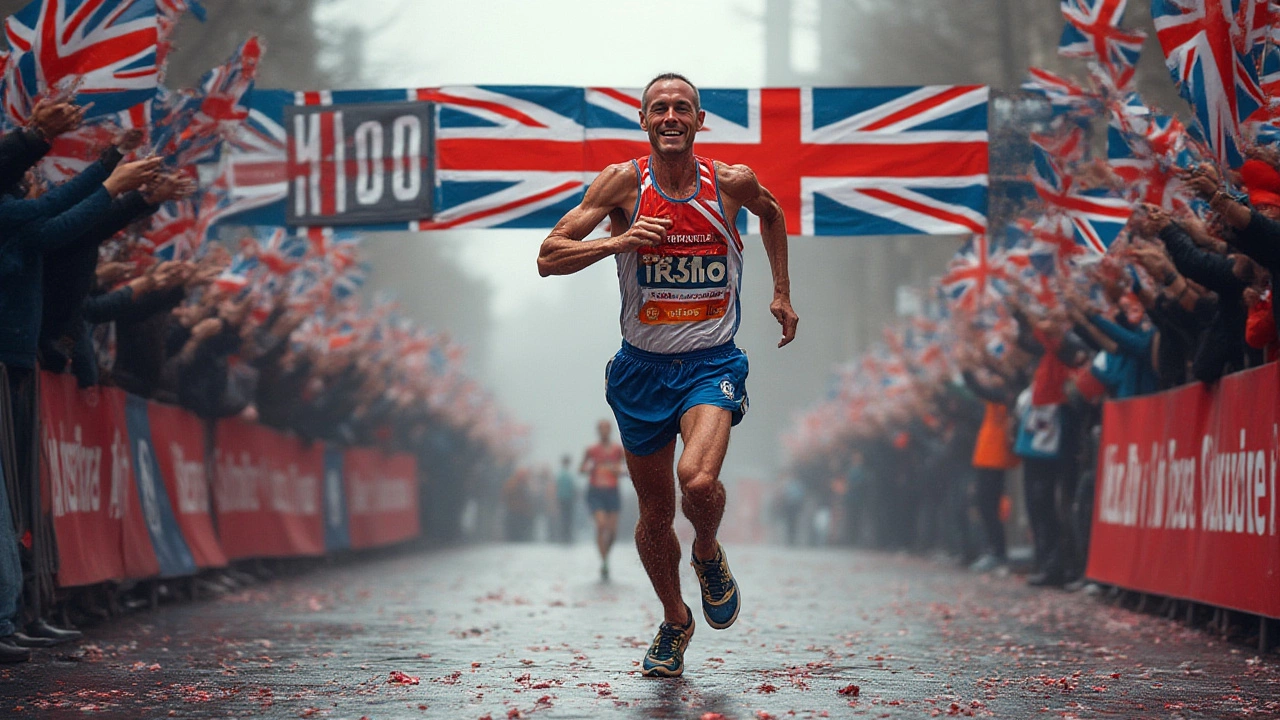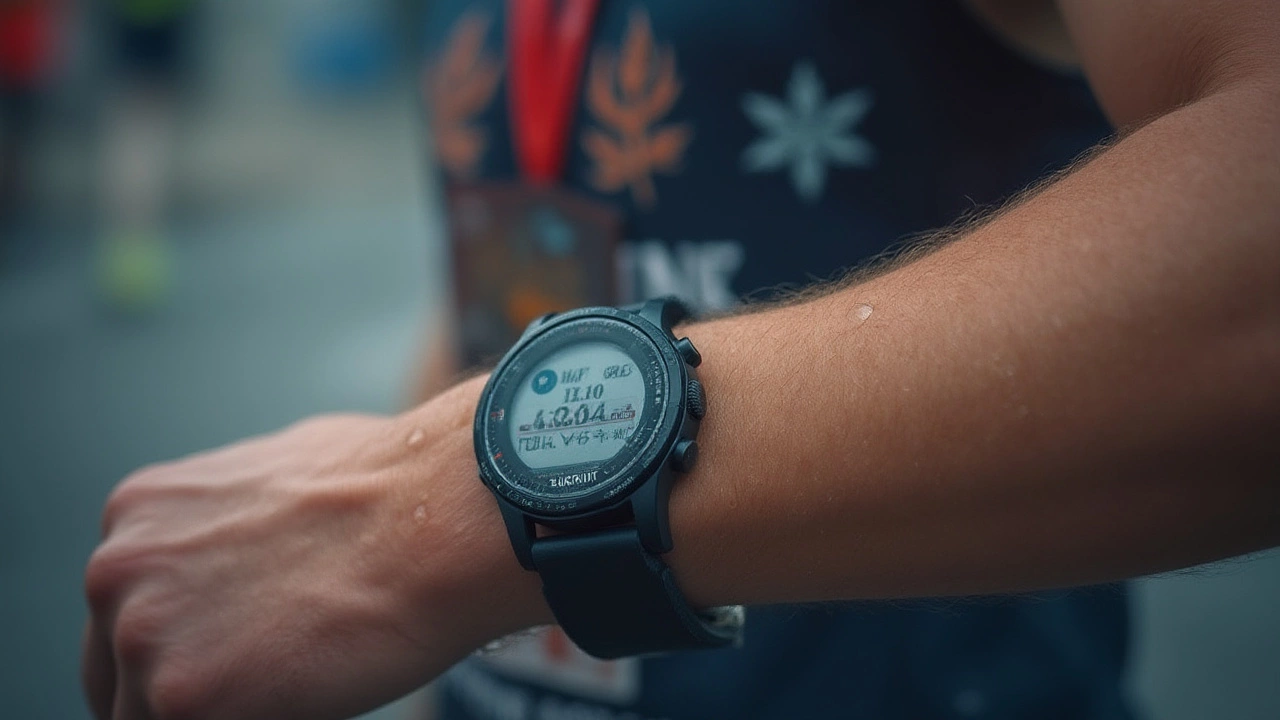Marathon Finish Times Explained: Is 4 Hours 10 Minutes a Good Marathon Time?

You can almost hear the cheers and taste that sweet finish line relief—a marathon behind you, a shiny finisher’s medal in hand, and a watch flashing 4:10:00. Does that time mean you’re brag-worthy at dinner parties, just average among runners, or somewhere in between? Some runners gush over their sub-four finishes, while others celebrate just crossing that finish at any speed. But what does 4:10 really say about your run? Is it genuinely a good marathon time, or just a shiny number in a sea of watch faces? Let’s break it down without any sugarcoating, and see how your 26.2 stacks up.
How Marathon Times Stack Up: The Meaning Behind 4:10
The average marathon time for non-elite runners sits in the ballpark of 4:30 to 5:00. If you dig into finishers’ stats from iconic races like the New York City Marathon or Chicago, most adults cross the line somewhere in that range. For example, in the 2023 NYC Marathon, average men’s times hovered just above 4:30. Women’s averages dipped a little under 5 hours. So if you’re clocking a 4:10, you’re beating thousands of your fellow runners—not by a little, but by 20 minutes or more. That puts you ahead of the statistical curve.
But what about age and gender? Those numbers aren’t just trivia—they’re crucial if you want to be honest with your performance. Marathon records—real, official ones—show most men in their 20s and 30s aim for 3:30 to 4:00, but many land closer to 4:15 or even later. For women, especially between ages 30 and 50, finishing anywhere under 4:20 is a strong showing. The closer you creep to a sub-4-hour finish, the rarer the air gets—less than one in four marathoners hit that mark. So if you’re a first-timer or training part-time, a 4:10 is solid, almost like being a B+ student in a class full of B’s and C’s. You deserve to feel proud, especially if you didn’t grow up eating gels for breakfast or tallying weekly 50-mile training logs.
Here’s a quick glance to see where you fit. Imagine a massive finish line clock for major 2023-2024 marathons—the below table tells you how common your time really is:
| Marathon | Average Men's Time | Average Women's Time | Median Overall Time |
|---|---|---|---|
| New York City Marathon | 4:33 | 4:56 | 4:42 |
| Chicago Marathon | 4:29 | 4:52 | 4:40 |
| London Marathon | 4:21 | 4:48 | 4:32 |
If you cross the finish under 4:10, your time is below the median at nearly every big-city race. That means you finish ahead of about half of all runners, regardless of age or gender—proof you’re doing something right, especially if you’re not chasing an Olympic berth.
Pacing is the secret sauce behind any good marathon time. A 4:10 finish means you’re running about 9:32 per mile—a brisk, steady pace that skips the middle ground between jogging and truly racing. Many first-timers hover at or just above a 10- or 11-minute mile for the whole distance. It’s an honest challenge to keep 9:32 for 26.2 miles, especially if you’re dealing with the late-race fade which wrecks plans for even veteran runners.
If you were shooting for the Boston Marathon qualifying time, things get real. For men aged 18-34, you’d need a 3:00; for women, a 3:30. So, a 4:10 isn’t punching your ticket to Boston, but that’s not a knock—most marathoners will never hit those qualifying marks, and at any big city race, you’ll see plenty of fit, talented runners coming in right around your pace.
What about bragging rights? A 4:10 time may not earn gasps at ultramarathon clubs, but it will turn heads in your office, running group chat, or among family. Most non-runners can’t quite grasp the time, but for those who do, a sub-4:15 signals someone with both discipline and resilience. And don’t forget: a marathon is never "easy." When was the last time your neighbor ran a 10K, let alone a marathon at a 9:32-per-mile pace?
Now, who tends to hit this 4:10-4:20 range? Often, it’s runners with a few years of mileage under their belt, fitting in four or five runs a week, but juggling work, family, and life’s curveballs. They’ve likely faced blisters, bonks, and bathroom emergencies on the course, learning to grit it out when miles 20-26 feel endless. It’s a club that values effort over split-second perfection—where the joy is in the journey, not just what the clock says at the end.

What a 4:10 Marathon Says About Your Training, Preparation, and Mindset
Finishing a marathon in 4 hours and 10 minutes isn’t just a number—it’s proof of weeks, even months, of grit and commitment. To land at this time, you probably dedicated yourself to a training plan, got up early on wintery Saturday mornings, and resisted sleeping in on rainy days. Most runners hitting the 4:10 time stick with a plan of at least 30-40 miles per week in peak training, sprinkled with at least one long run over 16 miles and a mix of tempo and recovery days.
You probably know the pain of pre-dawn alarms and the joy of stopping for a Coke mid-long-run when you just need carbs right away. Hitting a 4:10 finish means your fueling likely didn’t go off the rails—you either practiced taking gels or snacks, or learned the hard way in prior races. Hydration? You get the point. Runners in this range usually don’t need to walk many water stations, but they still stay smart. They pace themselves smartly, often checking watches but also listening to the body—a skill that’ll serve you well on race day and beyond.
Mental prep is half the battle. At 4:10, you know the wall is real: for most people, somewhere around miles 18-22, your legs turn into bricks and your mind screams "stop." You stuck it out anyway. That kind of resilience can’t really be taught in a book or YouTube video. It comes from messy, real-life miles—ones where you went hard, got burned, and learned your limits. In fact, a study in the Journal of Applied Sport Psychology (2024) found that mid-pack marathon finishers, especially those around the 4-hour time, reported higher levels of mental toughness and adaptive strategies—think positive self-talk, breaking the race into mini-goals, or just zoning out to epic playlists.
Let’s get practical. Want to target a 4:10 marathon? Here’s what your training structure probably looked like:
- Peak weekly mileage: 35-45 miles
- Long run: 18-20 miles at least once before race day
- Tempo runs: Regular runs at just above marathon pace
- Strength and mobility work: Some cross-training, but mostly lots and lots of running
- Rest days: One or two per week, embracing recovery
- Fuel strategy: Practiced race-day nutrition in training
Marathoners at this level usually know the basics: don’t try anything new on race day, learn to adjust pace during bad patches, and always, always have a backup plan for the final 10K. No one’s race goes exactly by the book, but those who finish around 4 hours and 10 minutes are usually those who don’t panic when cramps hit or when water stations are busier than rush hour traffic.
Another thing: hitting this time says something about your ambition and patience. You’re in a sweet spot—not content to just "wing it," but not obsessed like an Olympic hopeful. Runners at 4:10 often set stretch goals and chase improvement, but don’t let numbers kill the joy of running. If you can keep training fun, you’ll last longer in the sport and keep shaving down minutes, maybe years down the road.
If you’re looking to break past 4:10 next time, check your recovery. Current running data from Strava and Polar Flow (2025) shows runners plateau when they don’t embrace rest—pushing through low-grade aches instead of letting the body rebuild. It’s not always hard work that pays, but the right combo of push and rest. Embrace injury prevention, listen to your body, and mix easy runs with hard efforts.
Finally, not every day feels strong. If you slogged through the last six miles at a shuffle but still hit your target, count that as a victory. Some marathons are about head games, sticky weather, surprise blisters, or an unexpected bathroom queue at mile 12. The 4:10 club is filled with people who’ve seen it all and kept moving.

Tips for Hitting Your Targets and Enjoying the Journey
So you’re eyeing a 4:10 marathon—or maybe you’ve already bragged about your sub-4:15 marathon on social media. What’s next? Maybe you want to slice minutes off that number. Or maybe you want to keep improving while still enjoying the process, not sucking all the joy out of running.
First, let’s talk about what actually moves the finish line closer. The most effective marathoners track their stats, yes, but don’t obsess over every slow split. Try these tested strategies to run better—and happier—whether you’re staying at 4:10 or chasing three-something:
- Consistency (yep, it’s the secret sauce): Runners who toe the line injury-free usually log four to five runs a week, year-round, not just in "race season." They keep moving, even in off months, building base miles that let speed and endurance come easier. The magic is in sticking with it, even through holidays and life chaos.
- Mix up the training: A steady diet of "just running" can get you pretty far, but the runners who break 4:10 often toss in speedwork, hill repeats, or fartlek sessions. They rotate hard and easy runs—the hard ones teach your legs to move faster, and the easy ones keep you healthy.
- Fuel and hydration: If you bonked during your last race, it probably wasn’t because you weren’t tough enough—it’s usually poor fueling. Get your gut used to gels or chews, and practice drinking water and electrolytes at race pace. Race day is not the time to debut a new brand or flavor.
- Race-day plans: Veterans break the marathon into segments, focusing only on the next 5K instead of getting psyched out by 26.2. If you’re gunning for a specific time, pace groups can help—but don’t glue yourself to them if you’re having a good or bad day. Stay in tune with how your body feels, and adjust as needed. The clock doesn’t lie, but it shouldn’t rule you.
- Train your mind: Most marathoners bail mentally before their legs give out. Practice mental strategies—like positive mantras, visualizing tough moments, and even planning little rewards along the route (hello, orange slices at mile 18!). Look up tips from pro athletes or sports psychologists; lots of smart tricks bubble up in running podcasts and books these days.
- Celebrate your improvement: Too often, runners jump from one goal to the next. But making it to a strong marathon finish—at any time, but especially at 4:10—should be celebrated. It’s proof of dedication, growth, and maybe even a little genius pacing. Find a way to mark that accomplishment, then set your next challenge once you’ve soaked in the win.
Getting faster in a marathon isn’t about one magic workout or the perfect weather on race day. The runners who keep getting better track their own progress, cut themselves slack on tough days, and double down when things go wrong. If you’re carrying around a 4:10 time, use it as a launching pad—maybe to a sub-four, or maybe just a more joyful run next time out.
Marathons aren’t just about numbers. That 4:10? It’s a story—a year’s worth of sunrise runs, shin splints, donut bribes after long runs, and a belief that, step by step, the finish is possible. If you manage a marathon at this pace, you’re faster than you probably realize. And honestly? Most people watching from the sidelines won’t care if you run a 4:10, a 3:30, or slog it out past 5 hours. They’re cheering because you did something almost everyone thinks is impossible.
So wear that finisher’s medal proudly, brag if you want, compare your splits if you must, but always remember: a 4:10 marathon is more than a "good" time—it’s proof you belong in that tribe of finishers, strivers, and never-givers-up. Now, go lace up. There’s always another finish line waiting.
